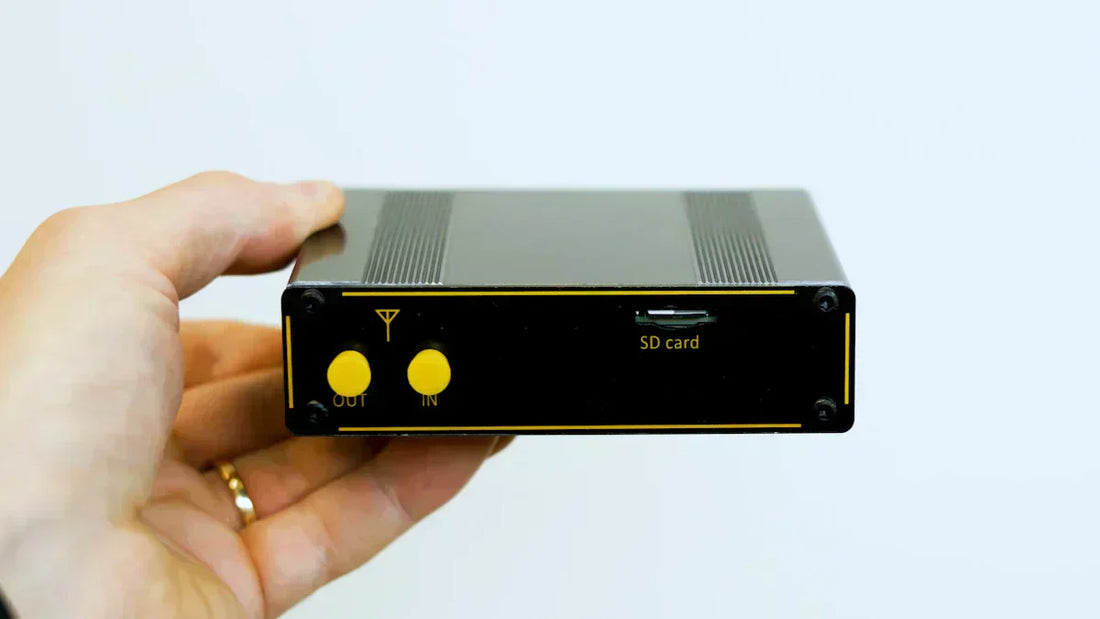
Onocoy Miner DIY Setups vs. Cheapest Onocoy Miner: Costs, Effectivity, and Durability Compared
Share
Unraveling the DIY vs. Pre-Built Dilemma in Onocoy Mining
Onocoy’s decentralized GNSS network, with over 6,548 stations worldwide as of August 23, 2025, supports centimeter-accurate data for precision agriculture, drones, and autonomous vehicles. Miners earn ONO tokens were the best rewards are based on data quality. Looking at everything from rural Onolink setups to urban NTRIP-X stations, this guide compares DIY builds with the affordable Bynav M20 to evaluate costs, effectiveness, and durability for your 2025 mining goals.
Exploring the affordable Choices: DIY vs. Budget M20
The Bynav M20 Onocoy Miner is a ready-to-use miner with a 126-signal M20 module, ANN-MB2 antenna (15-40dB gain, IP67), and a 5m cable for instant deployment. DIY setups use platforms like Raspberry Pi or Intel NUC, paired with GNSS receivers such as the Unicorecomm UM980 (145 signals) or Septentrio Mosaic X5 (100 Hz, anti-jamming), aiming to mimic reference stations with NTRIP servers for rewards. The question is whether DIY’s flexibility saves money or if the M20’s reliability wins out for ease of use.
Cost Breakdown: Crafting vs. Purchasing
- DIY Costs: A DIY build starts with a Raspberry Pi 4 (€50-75) or Intel NUC (€150-200). Add a GNSS receiver like UM980 (€200-300) or Mosaic X5 evaluation kit (€645). An antenna (ANN-MB2 at €60 or AllBand+ 38dB at €189.99) and cables (€20-50) bring the total to €330-974.99. Software like RTKLIB is free, but setup time (10-20 hours) might equal €50-100 in effort. A DIY Pi-UM980 cost €400 after antenna upgrades, which is still quite cheap for a full onocoy setup.
- Bynav M20 Costs: The M20 at €367.71 includes the miner, ANN-MB2 antenna, and cable. The M20 can be upgraded with the Budget 38dB antenna for €115, giving a €482.71 total. The next upgrade is with a AllBand+ 38dB for€189.99, giving a €557.70 total. No advanced setup is needed, offering a fixed cost.
- Verdict on Cost: DIY can beat the M20 at €330 with basic parts, but top-end builds (€974.99) exceed it. The M20’s predictable cost suits beginners, while DIY fits those with time and parts.

Effectiveness for Rewards: Signal Quality and Uptime
- DIY Effectiveness: Rewards depend on signal quality and uptime, scaled by local miner density (0-100%). A DIY UM980 can reach 80% reward potential, while a Mosaic X5 might hit 95%.
- Bynav M20 Effectiveness: The M20’s 126-signal module and ANN-MB2 antenna deliver 75-80% signal quality, validated in 24-36 hours per Onocoy docs. By upgrading to the Budget 38dB antenna (€482.71 total) it have been seen to reach 90% signal quality, but this is rare. Its design reduces latency risks, aiding 15km radius ranking.
- Verdict on Effectiveness: DIY can match the M20 (80-95%) with skill; but it can be complex. The M20’s 70-90% reliability is easier, ideal for new users.
Durability: Withstanding the Elements
- DIY Durability: DIY uses consumer gear; common Raspberry Pi’s plastic case have been seen to overheat at 35°C, needing a €20 fan, limiting lifespan to 2-3 years. The UM980’s IP67 helps, but exposed cables and PVC mounts rusted in rain, cutting signal 10% after a year. The Mosaic X5 lasts 4-5 years, but loose connections have been seen to fail. Weekly checks are key with DIY stations.
- Bynav M20 Durability: The M20’s 140g, IP67-rated design have been seen to survive a coastal storm with just easy cleaning. Its fanless 1.4-1.6W setup avoids heat issues, and the ANN-MB2’s 260g frame resists wind; it lasts 3-4 years with quarterly maintenance (my routine). Compared to Onolink Onocoy Miner’s IP55 (2-3 years), it’s more resilient.
- Verdict on Durability: DIY builds varies (2-5 years); and can require yearly fixes The M20’s 3-4 year life needs less care, beating DIY’s inconsistency.

Key Takeaways and Advice
Pre-built wins for ease, but DIY offers customisation for tech-savvy users. Costs favor DIY (€330-974.99) over M20’s €367.71-557.70, yet effectiveness and durability lean toward the M20 unless DIY goes premium (e.g., €645 Mosaic X5). Beginners benefit from the M20’s 70-90% signal quality and 3-4 year life, while DIY (60-95% signal quality, 2-5 years) fits skilled users in quiet areas. Start with the M20 on a rooftop, upgrade to Budget 38dB antenna (€482.71) if needed, and use the Onocoy explorer. DIY works with spare receivers (e.g., UM980) and time; expect €50-100 yearly upkeep. Check our Onocoy Miner Setup Tutorial and Onocoy Miner Info Hub for help.
Additional FAQs
Based on Onocoy mining insights, here are extra FAQs:
Q1: What Skills Are Required for a Successful DIY Onocoy Mining Setup?
A: DIY needs skills in hardware assembly (e.g., soldering or configuring Raspberry Pi/Intel NUC), software setup (e.g., RTKLIB or NTRIP servers), and troubleshooting signals. Basic GNSS and networking knowledge helps; a Pi-UM980 took 10 hours to stabilize NTRIP latency below 1s. Electrical basics aid power setup (3.3-12VDC). Without these, DIY can lose 10-20% signal quality. Beginners may prefer the Bynav M20 Onocoy Miner’s simplicity.
Q2: How Do I Ensure Compatibility Between DIY Components and Onocoy's Network?
A: Use GNSS receivers like UM980 or Mosaic X5 with multi-constellation signals (GPS, GLONASS, Galileo, BeiDou L1/L2/L5) and NTRIP/RTCM3 support, as Onocoy requires. Antennas (ANN-MB2 or AllBand+ 38dB) must match receiver specs.
Q3: Can I Upgrade a Pre-Built Miner Like the M20 Over Time?
A: Yes, the Bynav M20 Onocoy Miner supports antenna upgrades (e.g., Budget 38dB antenna for €115 or AllBand+ 38dB antenna for €189.99) to lift signal quality from 70-80% to around 85%. Firmware updates via ELT_RtkBase (v1.8.1) have been seen to add 5% signal quality.
